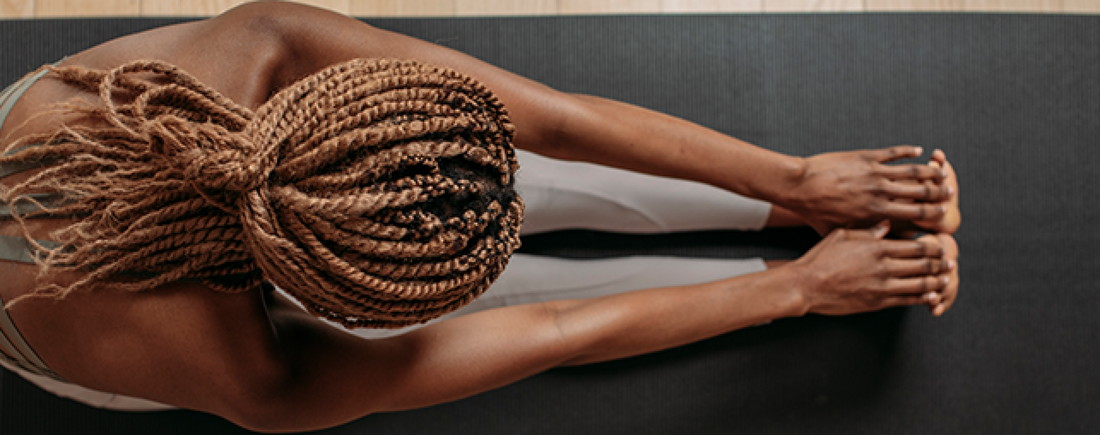Your body is constantly being placed under stress daily—both physiological and psychological—and when you are working out, you are greatly increasing both. While exercise is known to many as a form of stress relief, the phrase “too much of a good thing” proves to be true when it comes to exercise. Exercise and how it relates to your own body is a science, but even the most resilient athletes need to take at least one rest day during the week. (Yes, even your favorite Olympians take rest days!) Rest days are often overlooked because many people tend to think that taking a day off from their typical workout routine is going to undo the progress that they have worked so hard toward.
This is not true.
In fact, the lack of rest will most likely set you back from your goals. When you are working out, you are placing stress on your muscles, tendons, and ligaments, which actually makes small micro-tears. These micro-tears are necessary for muscle growth and strength, but eventually, the adrenaline of that workout passes, and the soreness starts to kick in. Some people will think they need to work through the pain but doing this will increase your chances of injury—not growth. If you’re trying to decide if you are due for a rest day, ask yourself these questions:
Rest is to “cease work or movement in order to relax, refresh oneself, and recover strength.” So, when planning your rest day think: What makes you feel revived, refreshed, and renewed?
Here are a few types of recovery you can consider adding into your next rest day:
Sometimes you might only need to focus on one or two of the elements mentioned above, other times you’ll need to utilize multiple elements to combat the kind of fatigue you’re experiencing. It’s important to understand that what equates as a perfect rest day is going to vary from person to person and what you choose to do on your rest days will change depending on what your body is telling you. The best way to approach your next rest day is to reflect on how you’ve been feeling during the previous week; think about the good and the bad. Taking note of both will provide insight into what needs to be cared for and what the best ways of doing this could be. Whether you are new to working out or are a long-time committed Weekend Warrior, your body will thank you for answering its call to slow down and rest.
Discover how to use one of the simplest, most effective tools you have—your breath—to feel less stressed and more energetic with Breathwork, our self-paced online course. Learn More.
This is not true.
In fact, the lack of rest will most likely set you back from your goals. When you are working out, you are placing stress on your muscles, tendons, and ligaments, which actually makes small micro-tears. These micro-tears are necessary for muscle growth and strength, but eventually, the adrenaline of that workout passes, and the soreness starts to kick in. Some people will think they need to work through the pain but doing this will increase your chances of injury—not growth. If you’re trying to decide if you are due for a rest day, ask yourself these questions:
- Am I getting new aches and pains throughout my week?
- Am I exhausted before even starting my work out?
- Am I finding myself relying on caffeine to get through my days?
- Am I feeling burnt out mentally?
Rest is to “cease work or movement in order to relax, refresh oneself, and recover strength.” So, when planning your rest day think: What makes you feel revived, refreshed, and renewed?
Here are a few types of recovery you can consider adding into your next rest day:
Active Recovery
This is rest in the form of exercise. Sometimes movement can be the best remedy, but it is important to understand what different forms of active recovery exist.1. Pilates
Pilates is perfect for improving mobility, flexibility, and balance. With its strong emphasis on core strengthening, this is the perfect step you can take for injury prevention. Pilates is unique because it also utilizes different apparatuses to help ease or elevate the workout.2. Foam Rolling
Foam rolling is a deep-tissue, myofascial release. It helps to break up the knots in the muscles to allow for proper blood flow and an increased range of motion. Foam rolling, in my professional opinion, is one of the simplest yet effective forms of rest and regeneration.Nutritional Recovery
When taking time to rest, it’s important to make sure that you are giving your body the required quality and quantity of nutrients.1. Food Is Fuel
Even on your rest days, you want to make sure that you are still equipping your body with the fuel it needs to regenerate itself. That’s not saying that you can’t indulge in some guilty pleasures, but be sure to do it in moderation. The reason for this is that a lot of processed foods are high in sugar and other unnatural ingredients that often lead to increased inflammation within your body, which inhibits its ability to properly rebuild itself.2. Hydration
Water is used in nearly every physiological process in your body. So when you finally slow down and allow your body to heal itself, you need to provide it with as much fuel as possible. An effective way of replenishing your fluid losses is by ensuring you are getting enough electrolytes. Electrolytes are minerals like sodium, potassium, and calcium that are found in whole foods and beverages like coconut water and sports drinks. Take caution when ingesting sports drinks though because they tend to be high in added sugars and other artificial ingredients.Emotional Recovery
When it comes to fitness, it is mind over matter, and if you don’t prioritize your mental well-being, you’ll be more likely to get caught in constant ruts instead of steady growth.1. Meditation
When you take the time to understand your mind, you get to reconnect with your passions, drive, and truest self. Practicing mindfulness teaches gratitude and self-compassion, two things that help you to find motivation within yourself to continue pushing forward toward your goals.2. Sleep
You may think you can become accustomed to hectic routines and sporadic sleep schedules, burn out will always be lingering close behind. Getting quality sleep is one of the most important factors in recovery. While you are resting, your body is actively repairing and rebuilding those micro-tears mentioned earlier. This process, when protein is being naturally generated in the body to help in muscle repair, is called muscle protein synthesis.Sometimes you might only need to focus on one or two of the elements mentioned above, other times you’ll need to utilize multiple elements to combat the kind of fatigue you’re experiencing. It’s important to understand that what equates as a perfect rest day is going to vary from person to person and what you choose to do on your rest days will change depending on what your body is telling you. The best way to approach your next rest day is to reflect on how you’ve been feeling during the previous week; think about the good and the bad. Taking note of both will provide insight into what needs to be cared for and what the best ways of doing this could be. Whether you are new to working out or are a long-time committed Weekend Warrior, your body will thank you for answering its call to slow down and rest.
Discover how to use one of the simplest, most effective tools you have—your breath—to feel less stressed and more energetic with Breathwork, our self-paced online course. Learn More.






















